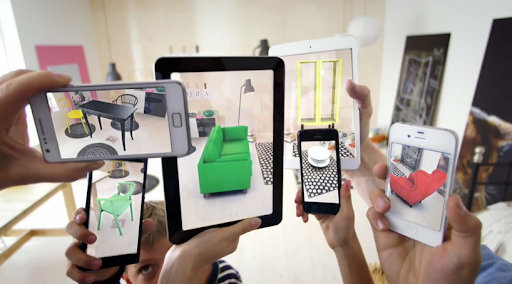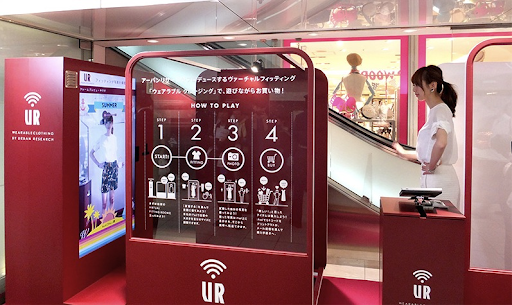AR and Retail: When Synergy Means Sales Success
How is augmented reality shaking up retail?
IKEA has always led the way when it comes to AR and the retail experience, since the release of its Catalog App in 2013. The app, which allowed customers to scan pictures in the IKEA catalogue then project a 3D image of a Billy bookcase or a Poäng chair onto their own space, generated plenty of buzz. IKEA was one of the first major retail chains to adopt AR technology, and the Catalog App set the tone for AR in retail: following IKEA’s lead, many retailers released AR apps designed to replace the brick-and-mortar store experience, enabling customers to shop in the comfort of their own homes. With the equally buzzy 2017 release of their Place App, an upgraded version of Catalog, IKEA seemed to double down on this approach. But for some retailers, AR technology and in-store experience aren’t mutually exclusive. These stores are creating apps and experiences designed to enhance the brick and mortar retail experience, and draw more customers to physical stores. It’s a new strategy – and one that seems to be working.
Photo Source: Wikimedia commons
For many consumers, online shopping has supplanted the traditional retail experience, and that’s especially true when it comes to fashion. One reason consumers prefer online clothes shopping to the real-life retail experience? They’re far more likely to find the garment they want in their size or preferred color online than in-store. But walk into select outlets of fast-fashion shops like Uniqlo, or Topshop and you’re all but guaranteed to find exactly the item you’re after, thanks to virtual mirrors and dressing rooms.
Photo Source: Wikimedia commons
Uniqlo’s Magic Mirror, developed in partnership with Holition, allows customers to try on one garment in multiple colorways. Customers at other chains, like Zara and American Apparel, can now use apps to scan tags and signs in-store and immediately access info on care, materials, and sizing as well as customer product reviews. Make-up lovers don’t miss out, either: retailers like MAC and Charlotte Tilbury boast virtual mirrors that allow their patrons to play around with lip and eye colours in countless combinations – no face wipes necessary.
Yes, magic make-up mirrors are clever viral marketing. But this use of AR is more than a mere PR stunt – it’s actually clever strategy. By bundling the convenience of online shopping and the experiential benefits of the traditional retail experience, retailers create high impact, omni-channel sales experiences for their customers that make shopping easier than ever before.
Like that jacket but wish it came in green? Scan it, to see the full range of shades. On the fence about those shoes? Access a wealth of customer reviews before you decide whether to buy. One potential downside to this newly streamlined retail experiences: customers are less likely to spend time browsing and, as a result, less likely to make impulse purchases. But retail tech specialist Nathan Pettyjohn firmly believes in the benefits of harnessing AR to “[ ]help shoppers find products and access relevant offers at the aisle level.” In fact, says Pettyjohn, streamlining the retail experience should lead to revenue increases of between 5 and 11% – and that’s a conservative estimate.
What’s the next step for retailers that have embraced AR’s potential for synthesising the online and in-store experience and streamlining the purchasing process? Using AR to make retail shopping fun. Some businesses are already leading the way: Starbucks have started unrolling their AR app at a Shanghai store, where customers can play site-specific games and brain-teasers while they wait for their lattes and macchiatos. Topshop made a splash when it installed a virtual water slide in its Oxford Street store last summer. There’ll always be an appeal to shopping at home in your sweatpants; retailers are betting that AR waterslides will have an appeal, too.


